6 Major Ports of Estonia
The Republic of Estonia is positioned in Northern Europe by the Baltic Sea, bordering the Gulf of Finland and near Sweden, Latvia and Russia. Its territory comprises the mainland, the larger Saaremaa and Hiumaa islands, and over 2000 small islands.
It is a high-income economy and boasts modern, sophisticated infrastructure. Maritime trade plays a vital role, and Estonia has several port facilities, the largest being the Port of Tallinn.
Let’s have a look at the major ports of Estonia.
1. Port of Tallinn
Tallinn Port is one of the largest port complexes on the Baltic Sea coastline. An intermodal hub, Tallinn Port deals with passengers and varied cargo types.
It has two harbours for passenger ships, namely the Old City Harbour and the Saaremaa Harbour, and two harbours accommodating cargo, which include the Muuga Harbour and the Paldiski South Harbour.
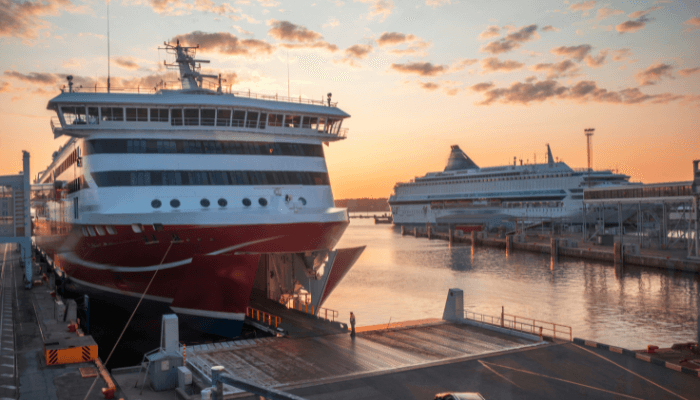
Old City Harbour
This is Estonia’s biggest tourism gateway and one of the busiest passenger facilities in the Baltic, welcoming ten million visitors annually.
Covering 56 ha, the harbour is frequented by cruise ships and pleasure crafts. It has 24 quays, two ferry terminals and a cruise terminal that enables visitors excellent access to the city centre and the medieval old town. It also handles RORO.
The Old City Marina is also a part of the harbour. This modern facility serves recreational vessels.
Saaremaa Harbour
It is the deepest harbour on the northern shore of Estonia’s biggest island, also called Saaremaa. This harbour serves cruise ships, pleasure crafts and cargo ships.
Its suitable geographical location near main shipping routes makes it an ideal stopover point.
Saaremaa Harbour has an alongside depth of 10 m and can service ships up to 200 m long. Its natural depth allows it to accommodate the biggest cruise ships.
The port covers 20 ha and a water area of 41 ha, with two quays for cruise ships and a floating berth for small crafts.
Muuga Harbour
Muuga Harbour is the principal cargo facility of the Tallinn Port, situated in the southwestern part of the Finnish Gulf in Muuga Bay, around 17 km east of Tallinn city.
It is the biggest and deepest port in the country and accounts for 50% of the total cargo volume of the Tallinn Port and 40% of the transit cargo volume that passes through Estonia.
Muuga specialises in dealing with transit-origin cargo. It deals with liquid bulk, such as crude oil, and dry bulk, including timber, grain, gravel, fertilisers, coal, general cargo, containers and RORO.
The port covers 566.8 ha of land and 682 ha of water area and has 29 quays, which are 6379 m long with a quay depth of 18 m, to accommodate 300 plus m long vessels with a width of 50 m and above. The harbour has a natural depth of 18 m and has two basins separated by a grain berth and the coal terminal.
Bulk Cargo is handled at the West Basin, which also deals with RORO, while the East Basin has containers and general cargo facilities.
The harbour remains open all year round, and ice is managed with the help of icebreakers. Approximately 22,000,000 tonnes of cargo and 1670 ships are handled at the port annually.
Ample storage space is available, including 2,300,00 m2 of warehouse area, 6 950,00 m2 of open storage space and 13,500 m2 of reefer warehouse area. The oil tank can store up to 1,550,150 cubic metres, the grain silo has a capacity of 300,000 tonnes, and the fertiliser terminal has a capacity of 192,000 tonnes.
Paldiski South Harbour
Situated 45 kilometres west of Tallinn, Paldiski is a regional harbour and has a high potential for growth in the region. It handles imports and exports as well as transit cargo. However, the primary focus is RORO, followed by scrap metal, timber, oil products and peat.
It is directly connected to several West European ports and is an important stopover point for Baltic Sea RORO Shipping Lines.
Paldiski includes two harbours, both engaged in commercial maritime trade. These are Pohjasadam, or the North Harbour and Lounasadam or the South Harbour. Around 850,000 tonnes of cargo and 600 ships are handled at the port annually.
The port covers 118.7 ha of land area and 147.0 ha of water area. It has ten quays with a total length of 1850 m and a maximum depth of 15.5 m to accommodate ships measuring 250 m lengthwise and 45 m breadthwise.
Both harbours have several terminals and storage areas. The warehouse area spans 15,000 m2, while the open storage area covers 540,000 m2. The oil tank has a capacity of 397,910 m3.
2. Paljassaare Port
Paljassaare Harbour lies on the Paljassaare Peninsula in Tallinn, around 6 km from the city centre. It can handle 3 million tonnes of cargo annually. However, it is smaller than the Muuga Harbour and the Old City Harbour.
It is one of the most well-sheltered harbours in Estonia, and vessels can access the harbour through an 800 m long and 90 to 150 m wide canal, which is 9 m deep.
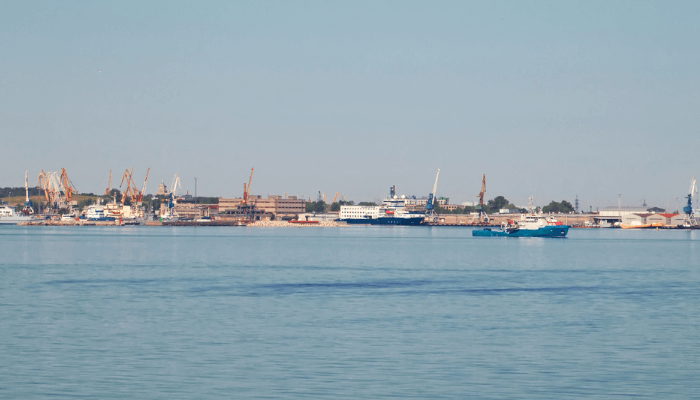
The port has an oil terminal, another terminal for cooking oil, a coal terminal, a timber terminal, general cargo terminals and dry bulk terminals. It also handles container cargo, perishable items, etc. Around 1000 ships dock at this facility every year.
Earlier known as Kopli, this port covers 32.8 ha and has 11 berths spanning 1859 m for cargo vessels measuring 190 m lengthwise and 30 m breadthwise.
The Bay freezes in winter, but the port remains open throughout the year due to the use of icebreakers.
3. Port of Parnu
Port of Parnu is situated on the Riga Bay near the Parnu River. It exports wood pulp, flax and timber and imports salt, fertilisers and coal.
Approximately 1100 ships visit the port, and 1,700,000 tonnes of cargo are handled annually.
In 1863, when its breakwaters were constructed, it became Estonia’s biggest export facility. In 1889, the authorities bought a bathing facility to build a resort and attract the Russian Aristocrats.

In 1896, the railroad linked Parnu Port with Valga, making timber the principal export product of Parnu. Ferries began to take people across the Baltic to Stockholm from Parnu in 1937.
It was around this time that hotels were being built, including spas and resorts; however, after Estonia lost independence, everything was nationalised under German control and in 1944, Port of Parnu was damaged due to bombing, which also destroyed the historic downtown area.
Soviet Principles were imposed on the city from 1945 to 1949; however, as pressure lessened in the 1980s, the port organised several international festivals.
The port reopened for trade in the 1990s after remaining almost defunct for 50 years. The marina was awarded Eastern Europe’s first Blue Flag, and a yacht championship was held.
4. Port of Sillamae
Also called Silport, this facility lies in the Bay of Narva on the southern coast of the Gulf of Finland. It remains open all year round.
It is strategically located in northeast Estonia, around 25 km from the border between the European Union and Russia.
It is also the easternmost facility of the EU in the Baltic Sea, which has land connections with places on the Eurasian Mainland through the Tallinn-St Petersburg route E20 and Tallinn-St.Petersburg Railway.
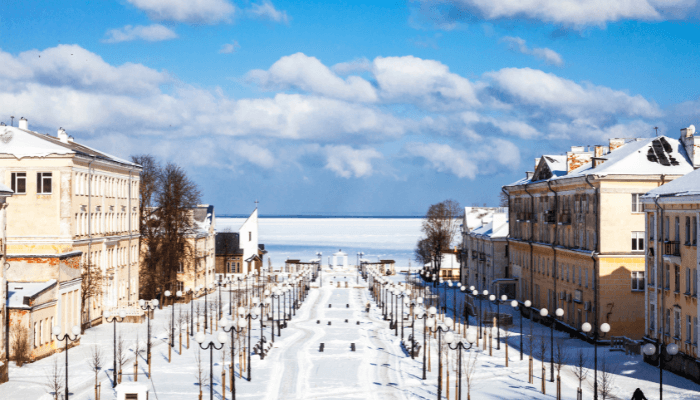
The port covers 390.5 hectares, and the coastal territory reaches around 740 hectares of area. The port efficiently handles oil products, dry bulk, RORO, passengers, and containers on its quays with a 16 m depth to accommodate the biggest cargo ships and oil tankers that can access the Baltic Sea via the Danish Straits.
There is a free zone and free space of 300 hectares to build more port terminals, distribution hubs, storage spaces and industrial areas.
Sillamae port has an 82-hectare storage yard for containers, general cargo and bulk, while 30 hectares is for wheeled vehicles, RORO and cars. Around 71,000 m2 of covered area is for general cargo and other miscellaneous goods.
It has 13 berths, which are 175-319 m long, with a 12-16 m depth, accomodating ships up to 275 m long, 56 m wide with a maximum draft of 15.2 m.
There is also a passenger terminal for accommodating ferries and recreational vessels.
5. Roomassaare Port
Roomassaare Port lies on Saaremaa Island, 2 kilometres south of Kuressaare town, on the end of the peninsula separating Kuressaare and Sepamaa’s bays.
The port’s facilities elongate the peninsula, stretching 0.5 km into the sea like a narrow pier with berths on the eastern side.
A 165 km breakwater extends from the tip to the east, sheltering the harbour. The port deals with general cargo, oil, agricultural products, stone, timber, farming machines, groceries etc.
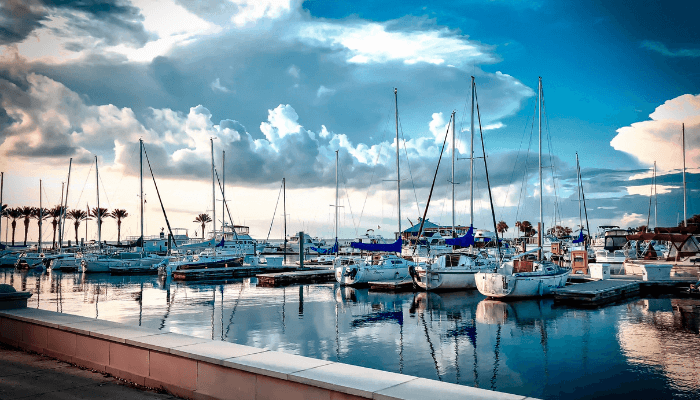
There is a passenger ferry service to the other islands from here and a place to accommodate yachts.
The port has floating quays and around 100 m of stone quays. It was labelled the best small port in the country and has had the Blue Flag since 1998.
Various services such as electricity supply, water, fuel, repair and maintenance of small vessels are offered here. A cafe and a shop for marine equipment open in summer.
Approximately 13,500 tonnes of cargo and 6800 passengers are handled at the port annually.
6. Port of Virtsu
Virtsu lies on the western coast of Estonia at the end of Virtsu Peninsula. The current port is situated west of the old harbour that is no longer used. The commercial harbour exports stone chips, limestone ash, passenger vessels, pleasure craft and timber.
Approximately 455,000 tonnes of cargo and 1,500,000 passengers are handled at the port annually.
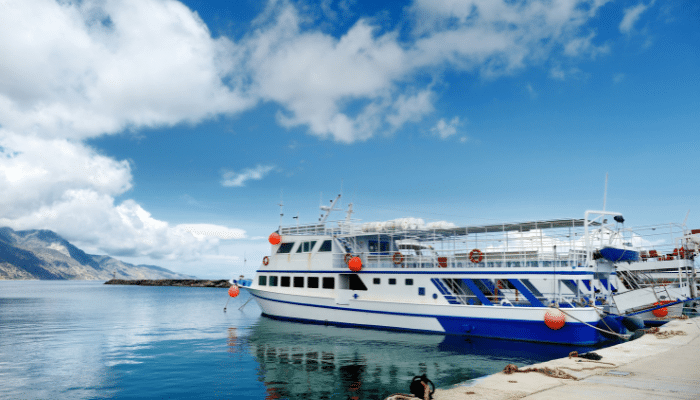
Apart from the cargo port, there is a terminal for ferry service to Kuivastu. The main pier is 300 m long and has ferry ramps on either side, allowing many ships to be handled simultaneously. The terminal can host ships which are 130 m long and have a 6.5 m draught.
Other Small Ports In Estonia
BLRT Group owns the Vene-Balti Port in Kopli Bay. The bay freezes in winter and can be accessed in winter using icebreakers. Main cargo handled includes grain, oil products, coal, timber, metal, general cargo, cars and passengers.
Rohukula is situated on the western coast of Estonia near the Island of Hiumaa. It handles 500,000 tonnes of cargo and 300,000 passengers annually.
Kuivastu Port is located on Muhu Island and deals with breakbulk, dry bulk and passengers. Around 1,500,000 tonnes of cargo and 850,000 passengers are handled annually.
Lehtma lies on the northern coast of Hiumaa Island in the west of Estonia. It is the biggest port in Hiumaa and is used by fishing vessels and yachts.
Sviby Port on Vromsi Island handles all its cargo and passenger traffic while connecting it with the mainland. The port is being expanded to add another ferry berth and a cargo ship berth with a ramp.
You might also like to read-
- 10 Longest Fjords In The World
- 5 Major Ports In Cuba
- 10 Important Canals In The United States
- 10 Titanic Captain Facts You Might Not Know
Disclaimer :
The information contained in this website is for general information purposes only. While we endeavour to keep the information up to date and correct, we make no representations or warranties of any kind, express or implied, about the completeness, accuracy, reliability, suitability or availability with respect to the website or the information, products, services, or related graphics contained on the website for any purpose. Any reliance you place on such information is therefore strictly at your own risk.
In no event will we be liable for any loss or damage including without limitation, indirect or consequential loss or damage, or any loss or damage whatsoever arising from loss of data or profits arising out of, or in connection with, the use of this website.
Do you have info to share with us ? Suggest a correction
Disclaimer :
The information contained in this website is for general information purposes only. While we endeavour to keep the information up to date and correct, we make no representations or warranties of any kind, express or implied, about the completeness, accuracy, reliability, suitability or availability with respect to the website or the information, products, services, or related graphics contained on the website for any purpose. Any reliance you place on such information is therefore strictly at your own risk.
In no event will we be liable for any loss or damage including without limitation, indirect or consequential loss or damage, or any loss or damage whatsoever arising from loss of data or profits arising out of, or in connection with, the use of this website.

About Author
Zahra is an alumna of Miranda House, University of Delhi. She is an avid writer, possessing immaculate research and editing skills. Author of several academic papers, she has also worked as a freelance writer, producing many technical, creative and marketing pieces. A true aesthete at heart, she loves books a little more than anything else.
Latest Maritime Knowledge Articles You Would Like:
Subscribe To Our Newsletters
By subscribing, you agree to our Privacy Policy and may receive occasional deal communications; you can unsubscribe anytime.















